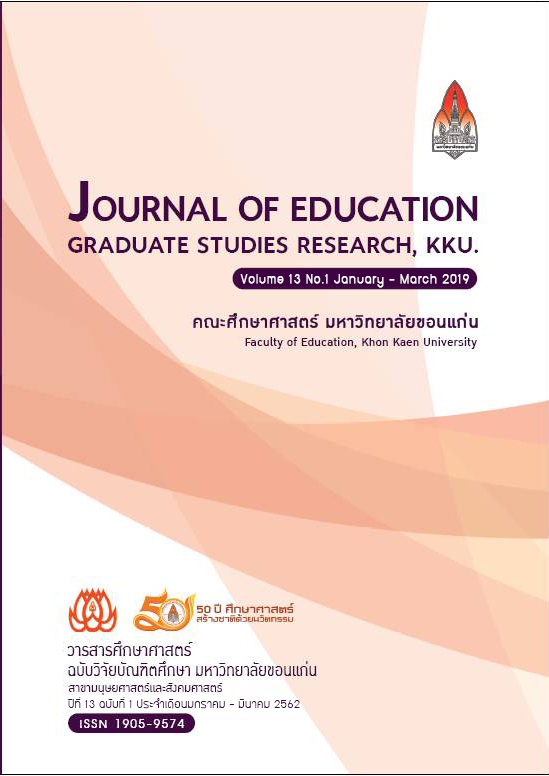A Study of Points of Teaching Proactive Use of Mathematical Representation in Arithmetic: Focuses on the Difference Between Arithmetic and Mathematics and Characteristics of Writing and Drawing
Main Article Content
Abstract
Focusing on writing, Shimizu (2012) found two difficulties contributing to students’ inability to write mathematical representation. The author proposes ways to overcome these difficulties in the teaching of mathematics.
In this paper, the author also proposes ways to address these problems in the teaching of arithmetic.
As suggestions for ways to address these problems, the author cites the alleviation of rules and abstractions and the promotion of the enjoyment of writing.
The author proposes ways of guidance to encourage children to write positively.
(1) Children should be encouraged to write their own ideas, freely using various kinds of representation including Illustrative Representation, with the teacher gradually making specificity and directness a priority.
(2) Teachers should prepare contents which are interesting and understandable, thereby encouraging children’s motivation to study autonomously by feeling the enjoyment of writing. The teacher should be aware of the need to carefully progress from the emotional in mind earliest stages of studying.
(3) Both teachers and children should be personally and positively engaged with the object of studying.
(4) Both teacher and children should be felt to value the quality and importance of writing.
(5) By the children seeking of higher goodness (value) of arithmetic, and children’s higher enjoyment of studying, children should study to use new representation over time, and in as natural a way as possible.
In proposals (1) - (5), while the author emphasis is on the early stages of studying in arithmetic and mathematics, it was necessary to take into account the unique characteristics of arithmetic.
Article Details
References
Vygotsky, L. S. (1987). Thinking and Speech. In R.W. Rieber & A.S. Carton (Eds.), The collected works of L.S. Vygotsky, Volume 1: Problems of general psychology (pp. 39–285). New York: Plenum Press. (Original work published, 1934; Japanese version, 2001)
National Council of Teachers of Mathematics. (2000). Principles and Standards for School Mathematics. Reston, VANCTM. (Japanese version, 2001)
Department for Education and Employment & Qualifications and Curriculum Authority (DfEE & QCA) (2004). Mathematics: The National Curriculum for England. http://curriculum.qcda.gov.uk/
Van Hiele, P. M., & Van Hiele-Geldof, D. (1958). A Method of Initiation into Geometry at Secondary Schools, in Freudenthal, H. (Ed.) Report on Methods of Initiation into Geometry, Groningen Wolters, pp.67-80.
Abe, Y. (1995). About the Emotional Aspects Found in Mathematical Representation, Papers of Thesis Presentation Meeting of JSME, No.28, pp.89-94. (Japanese)
Isoda, M. (1994). Mathmatics Hater and Academic Sense, Education Science & Mathematical Education, No.441 , Meiji-tosyo-shuppansha, pp.112-115. (Japanese)
Okazaki, M. & Iwasaki, H. (1998). A study about migration and guidance to mathematics from arithmetic (2) - The turning point of the illustrative learning , Papers of Thesis Presentation Meeting of JSME, No.31, pp.165-170. (Japanese)
Ministry of Education. (2012a). The Course of Study for Elementary School: Manual of Arithmetic. http://www.mext.go.jp/component/a_menu/education/micro_detail/__icsFiles/afieldfile/2009/06/16/1234931_004_1.pdf (Japanese)
Ministry of Education. (2012b). The Course of Study for Lower Secondary School: Manual of Mathematics. http://www.mext.go.jp/component/a_menu/education/micro_detail/__icsFiles/afieldfile/2011/01/05/1234912_004.pdf (Japanese)
Saeki, Y. (1995). Education and Children: Meaning of that Understanding, Iwanami-shoten. (Japanese)
Shimizu, K. (2012). Promote Research and Teaching Proactive Use of Mathematical Representation (4): Focus on the Characteristics of Writing, Journal of Japan Academic Society of Mathematics Education, Vol.18, No1, pp.7-14. (Japanese)
Nakahara, T. (1995). A Study of Constructive Approach in Mathematical Education, Seibunsha. (Japanese)
Hayami, T. (1995). Promote Autonomous Motivation in Intimate Human Relationship, Lesson Study 21, No.424, Meiji-tosho-syuppannsya, pp.83-87. (Japanese)
Hirabayashi, I. (1991). Arithmetic Education to be to Hater Mathematics, Practice of the New Curriculum, and Mathematical Thinking, Problem-Solving, Toyokan-shuppansha, pp.1-29. (Japanese)
Hirabayashi, I. (1993). Understanding of Arithmetic Education, Kogakkan University Lecture Book Series, Kogakukan University publishing department, Vol.71. (Japanese)
Fujisawa, R. (1895). Contents and Teaching Methods about Arithmetic, Maruzen-syuppannsya. (Japanese)

